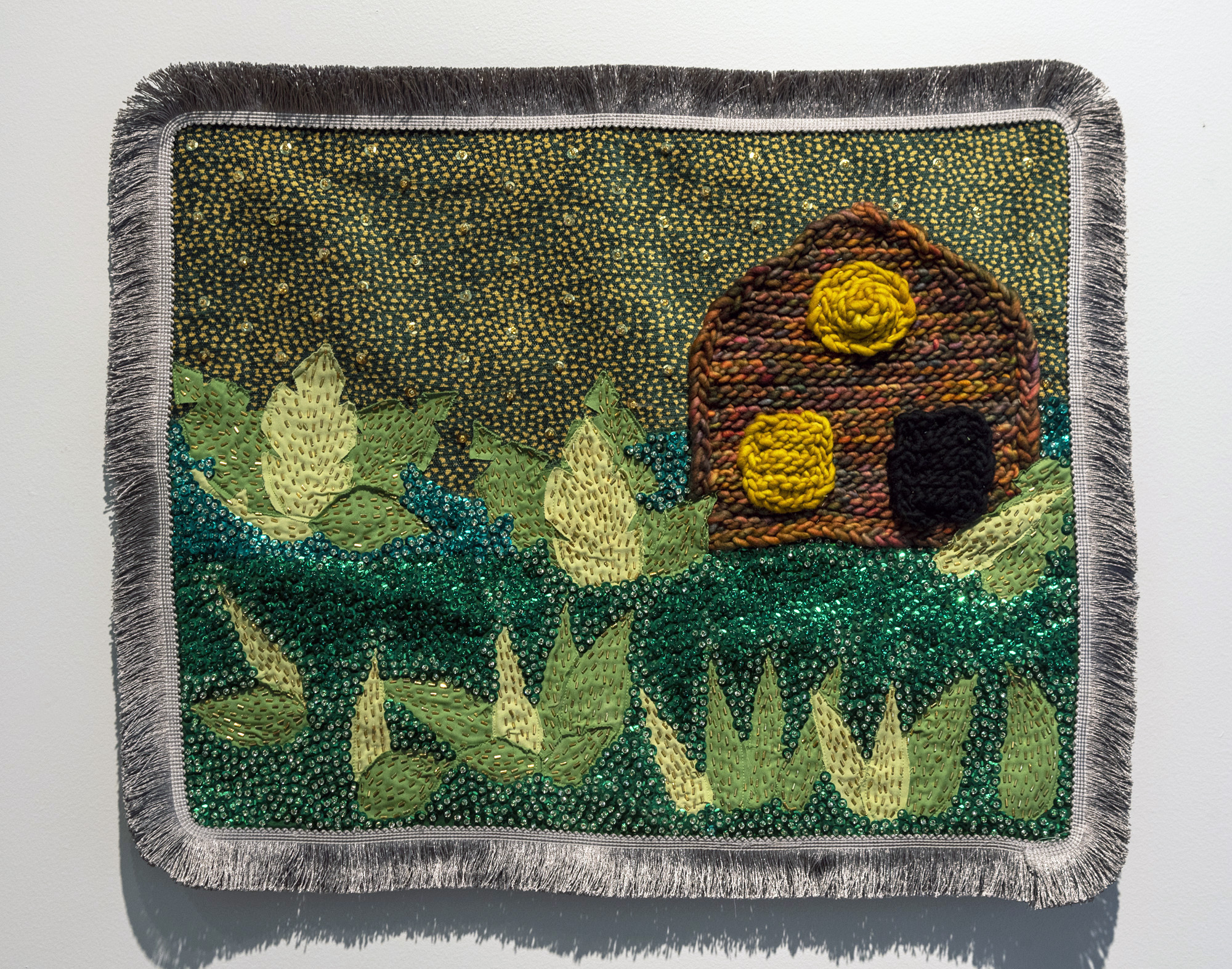…is the one we have already lost”
No Longer Available
Completed
2022
Medium
cotton, hand beaded, sequins, wool
Dimensions
21" x 27"
Description
Paradise layers history, geography, social relations, and the present together laying them next to each other to create an image that is not only wholly of Detroit, but America, using Detroit as a case study. This work reveals the promise of Detroit that many Black Southerners sought during the great migration and how the fallout of that promise has led us to Detroit now. I make tapestry-like works that map Detroit's history of red and green lining, white flight and divestment, through the destruction of Black bottom and Paradise Valley in the name of “progress,” the auto industry, and the marking/mapping of spaces of historic and contemporary social significances. Using this archival information, I create a series of images that is honest, painful, and resilient that talks about the duality of living while Black in a system that we were never meant to survive in. There is no one event that can be pointed to that explains why Detroit is in the position that it is. This work does not attempt to timeline the overwhelming series of events and instances that created the conditions, instead it seeks to contextualize them as cause and effect in relationship to the myth that brought Black southerners to the north by the hundreds of thousands. To lay the promise of “The Garden of the West”, next to the 1950s destruction of Black infrastructure, and the contemporary resilience of Black Detroiters creating the community to find a way through.About this Artist

Quinn Hunter
Quinn A Hunter was born in Charlotte, North Carolina and received her BFA From the University of North Carolina at Greensboro. She is looking at the way Black women negotiate between the self and the world. Between the crisis and the authentic. Through acts of self exhibition she is interrupting the view on the body and asking questions about the prescribed performances of femininity to the black body in divulging their limited imposed meanings. They reveal the persistent futility of Black female body reacting within the culturally allowed space and the subtle absurdity of it all. The erasing of labor renders bodies, the spaces they work in, and the work itself invisible. This erasure of labor is amplified in the labor done by women of color, in particular, the labor done by African American women in contemporary and historic domestic spaces. Quinn Hunter looks at the way this erasure of…
View Full Artist Bio
Contact Us
For inquiries, comments, and acquisitions, please feel free to contact us any time. We welcome your input and conversation.
